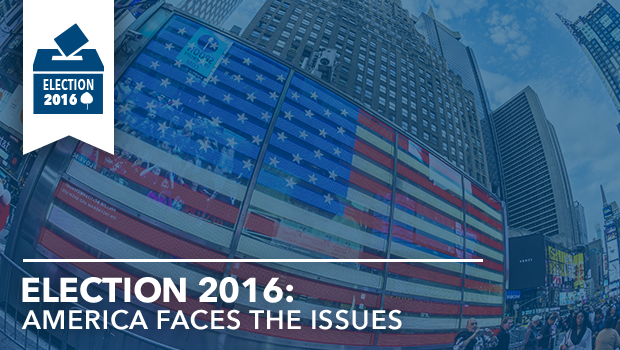To the American plurality who did not want to see Donald Trump as President, “the press” gets a hefty part of the blame for his election. It enabled his rise, as news and talk shows were eager to use him as a ratings booster. They created his celebrity, which he parlayed into political popularity. And when “the press” did turn on Trump, as it did during the general election, it was too late. Finally, media allowed the debate to center on the candidates, rather than pressing the issues that the campaign should have been about.
Aside from the fact that there is no singular “the press,” this criticism does not get us far. Newspapers overwhelmingly endorsed Clinton, some making an endorsement for the first time in their long histories. Journalists changed traditional practice to call out lies or misstatements in the same stories that the original reporting covered. They had little influence. The public was not concerned so much about the issues as they were about the candidate they didn’t like. It appears 62.8 million people voted against Hillary Clinton and 65.4 voted against Donald Trump.
The conventional wisdom going into the election was that the Republicans would need to pick up the pieces of their defeat and face a Civil War within the party. The opposite has happened. The Republicans, so far at least, have unified while the Democrats are the party in disarray.
So too is the press.
Social media, particularly the sharing of memes on Facebook and Google, and to some extent, the use of Twitter, subsumed the traditional press, which includes newspapers, magazines, broadcast, and cable news. Now the bloodletting is coming for the rampant circulation of fake news, the algorithms used by platforms to sort the news and inputs one sees, and some editorial decisions at those companies. For example, allegations that Facebook editors favored liberal stories and columns led Facebook to move to a non-judgmental algorithm for the selection of stories that would go into a newsfeed. The non-discrimination of the algorithm as to whether a story was true or fake, in turn, allowed Facebook users, knowingly or unknowingly, to circulate and recirculate fake news stories, to the net detriment of Hillary Clinton.
So where does the world of journalism, so essential to democracy, go from here?
Building literacies
Maybe we should begin with civic literacy before media literacy, but both are crucial. In any case, the responsibility for any election is collectively ours as Americans. As citizens with the hard-won right to vote, we have an obligation to exercise that franchise with some discretion. Every citizen has a responsibility to understand the basics of American civics, and to educate themselves on the candidates and issues. This does not have to be extensive, but there is evidence that it is not being practiced much at all.
Over 40 percent of the eligible electorate did not vote. Many made up their minds at the last moment, according to exit polls. (The election season isn’t long enough?) Schools and our media themselves need to teach media, digital, and information literacies, what I would call the “new literacies.”
Reforming social media
One of the most visible issues right now is the use of social media to facilitate or even encourage bad or false memes to reach large numbers of users. Some reform is in order. Whether it be through some form of control at the platform’s end or increased media literacy at the users’ end, it is important to combat an apparent iteration of Gresham’s Law of the Press: Fake stories drive out real stories. Should we trust a truth algorithm? A corporate platform censorship system? Crowd-sourcing verification of real versus fake news? These will all be subject of debate.
Fact-checking or story verification
Craig Newmark, founder of Craigslist, has long been a vocal proponent of increased fact-checking. This is clearly important, even though it appears that many voters did not care so much about the facts. But if the concern is a new brand of “fake news” that is superseding legitimate stories based on real facts, then story and source verification may be a better, more nuanced way to go.
That is, sites like Snopes can identify whether the site is trustworthy, and mainstream news sources will need to spend more time correcting or verifying facts. Competing verification sites would help remove the prospect that the single verifier had a bias.
Bolstering the traditional press
So what can and should traditional media do? Journalistic principles, which most every journalist in the traditional press knows and practices, require a continuing and skeptical eye on the centers of power – whether they be government, corporate, organizational, or individual. Press owners, already under a declining revenue model, need to allow for enterprise reporting – beat as well as investigative reporters – and give them time to work up a story of significance. Outlets that now have a political bent, something that existed around the time of Independence, need to tolerate the reporters who stray off the prescribed path, e.g., Megyn Kelly at Fox News, or Chris Matthews on MSNBC. The biggest difficulty is restoring trust in a medium that seems to have lost it among many, because the fake news overwhelms.
Making government more transparent
Of course in the US, the press wants neither favors nor interference. The Obama Administration started with executive orders promoting openness throughout the government. But in reality, there was secrecy, reticence, and combativeness. Presidential press conferences were rare, and as we all too well know, the Secretary of State was communicating out-of-bounds. While Donald Trump had very little good to say about the press, and even called for stricter libel laws, the Trump Administration needs to be open to the press, press conferences, and public scrutiny. This is more important than ever.
Journalism in the United States was one of the first industries to feel the trample of the digital revolution. Print advertising dollars became online dimes and nickels. Now it feels the boomerang effect. The democratization of news sourcing has had its benefits (e.g., phone videos of police brutality), but also its villain, fake news. And the fake news is tarnishing legitimate news sources and outlets. Americans need to identify the problems and deal with them, of course within First Amendment confines. It won’t be quick or easy.


